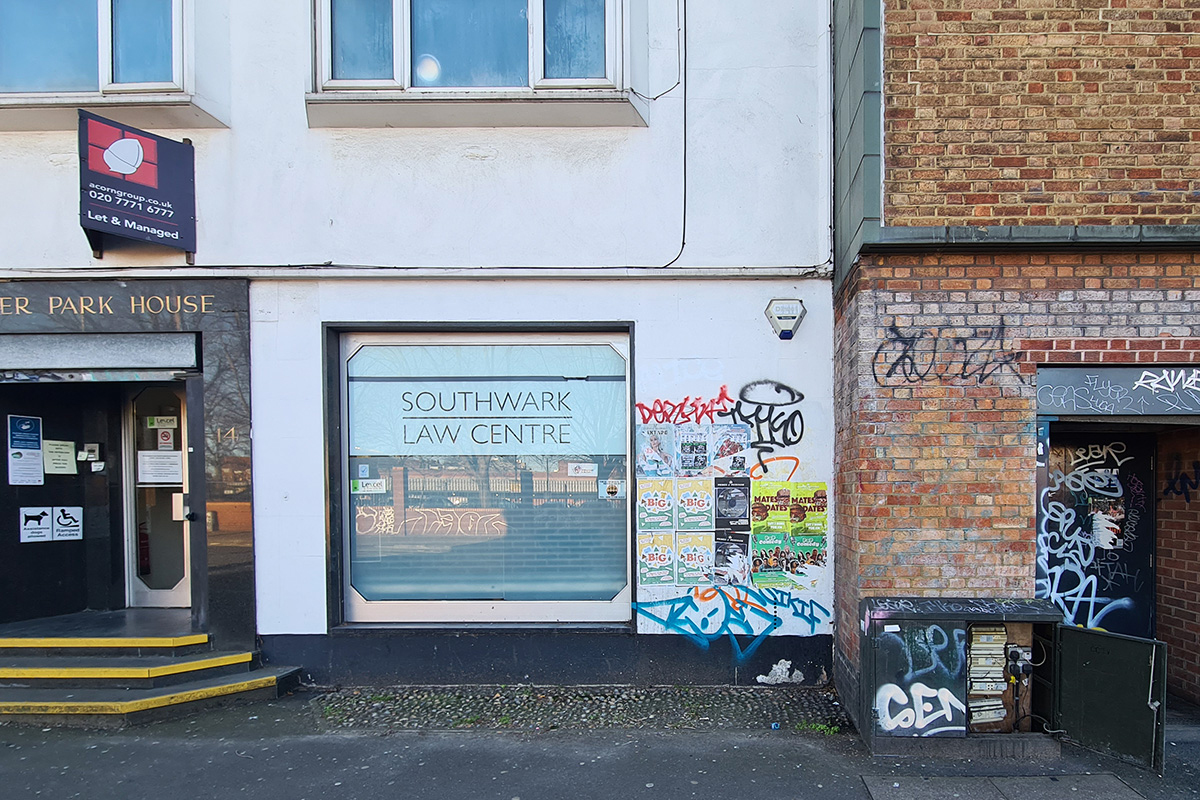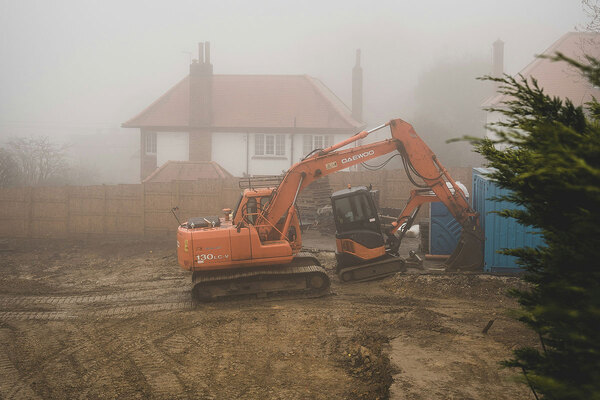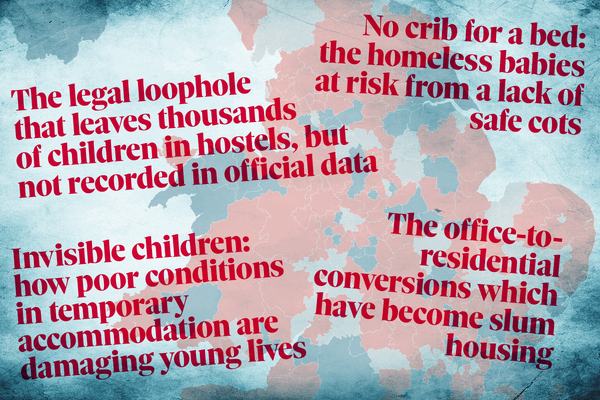Legal aid in crisis
The decimation of housing legal aid over the past three decades is hurting not just those who need to access it, but the entire social housing sector. And the problem has gone beyond simple fixes. Katharine Swindells reports

Rosaleen Kilbane has just got off a difficult phone call. She has been speaking to a woman facing homelessness, who is devastated to find out that she is not considered ‘priority need’ by the council, even though she is a wheelchair user. Ms Kilbane has had to break the news that her legal aid firm will not be able to take her case. “We just have no capacity at all this week. We’re completely full.”
This is not unusual for Ms Kilbane, who is a founding partner of the Community Law Partnership (CLP), an award-winning legal aid firm in Birmingham that focuses primarily on housing. With rising numbers of evictions and families facing homelessness, CLP is turning away more people than ever. Around 100 requests for help come in every week, but the partnership can usually only take five.
It is the job of the trainee solicitors and the receptionist to sort through and triage the enquiries, then the firm partners take turns to make the “heartbreaking decision” about which cases to take on and who to turn away.
Even so, this afternoon Ms Kilbane spent 10 minutes on the phone giving the woman advice on submitting a review, in the hope that will keep her off the streets, until CLP may be able to fit her in as a client.
Squeezed funding and tough restructuring mean that access to legal aid today is a shadow of what was intended when it was introduced 75 years ago. And although the relationship that housing lawyers have with landlords, housing associations and councils can understandably be a combative one, the decimation of housing legal aid in the UK has not only been hugely damaging for those who need to access it, it has also had wide-reaching repercussions for the housing sector.
The standardised rates that legal aid firms and law centres reclaim from the government for the help and advice given have not been increased in almost 30 years. Overall spending on housing legal aid in England and Wales has more than halved in a decade – from £44m in 2012-13 to £20.3m in 2021-22, the most recent figures, published by the Ministry of Justice last year, revealed.
The cuts have seen hundreds of legal aid providers leave the market. The Law Society last year estimated that 42% of people in England and Wales do not have access to a local legal aid provider for housing advice.
And access is still falling. Detailed data shared with Inside Housing by Jo Wilding, a former barrister and professor of public law at the University of Sussex, shows that between August 2019 and August 2023, the number of firms and law centres delivering housing legal aid in the UK decreased by more than 100, a reduction of more than a quarter (see graph, below).
But even that does not fully shed light on the scale of the issue, as a large proportion of these legal aid providers are delivering next to no actual legal aid. Of the housing legal aid providers registered in the year to August 2023, 29.5% did not deliver any legal aid cases, and of those that did deliver cases, 44.9% did fewer than 50 cases within the year.
Ms Wilding says: “If you have only very small providers or inactive providers in an area, clearly you’re not going to be able to get someone the legal aid they need.”
As a lack of funding pushes more and more legal aid firms to leave the market, it only drives up the demand for those remaining. Even as the government makes what sounds like positive gestures about increasing the eligibility barriers for legal aid, Ms Kilbane cannot feel optimistic. “It’s all pie in the sky,” she says. “It doesn’t matter how many people are eligible [for legal aid] if there’s nobody to do the work.”
Most of housing legal aid receives around £50 an hour from the government, which has to cover wages and all the business costs, and every minute billed is strictly monitored by the Legal Aid Agency. In comparison, the average corporate law firm would likely charge at least six times that.
Joanne Bennett started in the sector as a trainee solicitor in 1995, and worked her way up through multiple roles and firms before founding her own legal aid firm, Lawstop. “But throughout that whole period, the rates haven’t gone up,” she says. “So when I first started in the ’90s, the money coming in was the same, but salaries and rents obviously were lower… so it’s a business of diminishing returns.”
Then in 2013, the Legal Aid, Sentencing and Punishment of Offenders Act (LASPO) delivered a major blow, by removing large parts of legal aid work out of scope. Within the first year it came into force, the number of cases to which legal aid was granted plunged by 46%. Whole segments of advice were removed, such as welfare legal aid, which meant many firms, including CLP, had to make their welfare solicitor redundant. Despite welfare law being crucial to housing, most welfare legal support could no longer be billed.
Sue James, chief executive of Legal Action Group, says: “I could help with a housing case, but if no one can resolve their benefit problems, then that client will be evicted no matter how much work I put into it.”
LASPO also took the vast majority of housing disrepair cases out of scope of legal aid – except in the most severe circumstances. This was devastating to housing legal aid, as firms used the costs recovered from disrepair cases to cross-subsidise the rest of their housing and homelessness work.
These days, if tenants want legal support with disrepair, they are usually forced to find a ‘no win, no fee’ lawyer, which can see cases drag on for longer without resolution.
29.5%
Percentage of housing legal aid providers that delivered no legal aid cases in year to August 2023
74.4%
Percentage that delivered fewer than 50 cases
Even cases that are within scope are subject to heavy oversight by the Legal Aid Agency, bringing with it a large administrative burden. Legal Action Group says the agency has a “culture of refusal”, meaning solicitors spend many unpaid hours submitting paperwork and appealing decisions from the agency. The Legal Aid Agency did not respond to our request for comment.
Access problems
Organisations such as CLP and Lawstop survive, Ms Bennett explains, by hiring bright, young people looking for experience, and quickly training them up in how to run a case quickly and efficiently. But, she says, this strategy is “not really out of choice” but because, at the salaries they can offer, they struggle to recruit people who are already qualified. “The solicitors aren’t there.”
But such a heavy workload, which is both intellectually and emotionally demanding, takes its toll on those delivering it. The long hours and low pay see aspiring legal aid lawyers pushed to leave the workforce. Ms Kilbane says that last year, CLP lost three of its newly trained solicitors to jobs that were better paid.
Rita Rasheed, a housing caseworker at Southwark Law Centre, who is working to qualify as a solicitor, is one of the young people facing this choice. “I do want to stay in housing, but I’m also aware of the salaries in this field and if I ever want to buy a house or have children, then I don’t think a housing legal aid salary is going to be enough for it.”
Ms Rasheed jokes that a former colleague who now works for a council has gone to “the dark side”, but in reality she says she doesn’t blame him. “He can clock out at 5pm, he’s just bought a property, he’s got a child on the way… maybe I would do the same.”
Many young law students do not consider going into legal aid, she says, meaning the profession is dominated by those from wealthy backgrounds. In fact, many universities do not even teach about legal aid any more, making it all the easier to demolish it.
So even now if there was an injection of cash, there are not the people to deliver it. Last year, the Legal Aid Agency tendered for a new, non-means-tested housing advice service, which should be cause to celebrate, but parts of the country – including Liverpool, Teesside and Wigan – did not get any good tenders. Inside Housing asked the agency for more detail, but it did not respond.
When legal aid is this hard to access, says Ms James of Legal Action Group, it has a knock-on effect on the community. “There are parts of the country where the slum landlords and the decisions on homelessness just do not get challenged because there are no lawyers to do it,” she says. “And when anyone there has got a housing problem, they don’t ever think about contacting a lawyer because there just aren’t any.”
And if they do eventually seek legal advice, it is not until it is far more severe.
“Because people can’t get that early advice, these problems escalate, and people don’t get help until they’re in a terribly desperate situation,” says Dr Daniel Newman, author and academic at Cardiff University. “That means people go through a whole load of unnecessary suffering.”
What started out as a fairly minor benefits issue has now become major arrears and an eviction case. A simple case of damp and mould has spiralled into a devastating health risk. Legal aid lawyers directly link the cutting of the sector to cases such as Awaab Ishak, and the lack of knowledge many housing associations have about the condition of their stock.
“It might be short-term annoying to have a lawyer bother you about a small issue, but then you get it dealt with,” Mr Newman says. “But it’s got to the point when housing associations themselves don’t know about the problems, and that’s disastrous. We know it kills.”
Of course, the simple answer is to increase the funding for legal aid and make it easier to access. Uprating legal aid rates in line with inflation and decreasing the administrative burden on law firms to access it would help in the recruitment and retention of legal aid solicitors.
But, Ms James says, the damage is so far gone that a wider-reaching approach is needed to truly meet the needs of the housing sector. She would see provision regionalised, and rather than the legal aid agency, just “fully fund law centres to provide a holistic service”. This would allow law centres to address people’s entire problem, to make sure they get the best outcome.
Housing associations, Ms James says, could play a powerful role in advocating to policymakers for the importance of legal aid as part of the social housing ecosystem to policymakers. They could also collaborate with law centres to help their tenants access legal aid, and see it as a service that is their right.
Recent longform articles by Katharine Swindells
Top 50 Biggest Builders 2024
Which are the 50 housing associations building the most homes? What tenures are they building? And, with warnings already sounded about starts by the G15, what is happening to the pipeline? Katharine Swindells reports
Ready to check out: the lengthy repairs forcing tenants to live in hotels
Inside Housing has found tenants waiting months in temporary accommodation for repairs on their homes to be completed – or even started. Katharine Swindells reports
The estate where tenants are taking collective legal action on damp and mould
Tenants on one east London estate are teaming up to file a joint legal claim about the damp and mould in their homes. Katharine Swindells reports
The case for flooring to be included when social homes are let
Wales has just passed regulations that new social lets must come with flooring included. But with hundreds of thousands of families across the UK still living in social homes without carpet and flooring, should English and Scottish social landlords follow suit? Katharine Swindells reports










